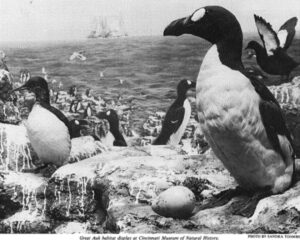The will-o’-the-wisp is a strange atmospheric light phenomenon seen in marshes, swamps and burial grounds. For centuries, this ghostly ball of light has permeated the human imagination through folk tales, songs, and literature. Different cultures have their own take on what the phenomenon means.
Name and history
English folklore tells the tale of an evil blacksmith named Will. When he died, Saint Peter sent him back to Earth with a second chance to redeem himself. However, the blacksmith continued to harm others. As a result, he had to roam the Earth as a ghostly presence for all eternity.
The Devil gave him a light from Hell, which he used to trick weary travelers into danger and death. In the minds of the superstitious, will-o’-the-wisps are bad omens.
There are many variations of the name. A wisp denotes a piece of straw or reed used for a torch. The Latin name for the phenomenon is ignis fatuus, which means “giddy flame”, referring to its quick, elusive nature. Hallowe’en’s familiar “jack-o’-lantern” is actually the Irish version of will-o’-the-wisp. Rather than the blacksmith Will, the Irish tell the tale of a fiend named Jack. Across different cultures, the origin story varies. In Sweden, the light is the soul of an unbaptized individual. In Finland, the light leads you to treasure.

Will-o’-the-wisp and a snake. Painting: Hermann Hendrich (b.1856)
In major literary works, the will-o’-the-wisp has a negative connotation. In the 17th-century epic poem Paradise Lost, John Milton describes Satan as “hovering and blazing with delusive light, misleads the amazed night-wanderer from his way to bogs and mires…there swallowed up and lost.” In The Lord of the Rings, the sinister Gollum cautions Frodo Baggins and Samwise Gamgee about the “lights” scattered throughout the Dead Marshes of Mordor. Both of these works suggest that following the will-o’-the-wisp is like sin leading to one’s destruction.
Nowadays, will-o’-the-wisp is a common metaphor for an illusion that one desires but cannot attain.

A cartoon called ‘Fools Make A Mock At Sin’. Illustration: EJ Pace Christian Cartoons/Digital Commons @ Biola
Characteristics
The will-o’-the-wisp typically manifests itself as small balls of light or flames, mainly a pale blue color. It hovers a few metres from the ground. No smoke is present and they usually occur in swamps and graveyards. Those who managed to approach it say that it is a flame with no heat. William Fulke, a 16th-century English Puritan and academic, described the will-o’-the-wisp in his Book of Meteors as a “fire that hurteth not”. The will-o’-the-wisp can remain still but also move quickly when someone gets close.
Explanations
Early explanations of the phenomenon included bioluminescence or glowing insects. Over the years, many equated it with other luminous phenomena like ball lightning or electricity produced by tectonic activity. For a time, scientists, particularly Alessandro Volta, believed it came from the spontaneous combustion of methane.
However, it is more complicated than that. Methane does not ignite on its own. Researchers in the UK and Italy tried to recreate the will-o’-the-wisp in their labs, but variations in colors like green and yellow occurred. The will-o’-the-wisp is always white or bluish. Most significantly, the lab version also gave off smoke.

Min Min Light in Australia. Don Meers was camping in the Outback one night when he saw this floating blue orb around 1 am and managed to take this blurry photo. Some locals in the area later told him that they would also see this sometimes. Photo: Don Meers
As of now, the best explanation for the will-o’-the-wisp is chemical luminescence — oxidation from decaying organic compounds in swamps, including methane, yes, but also phosphine and diphosphine.
These so-called marsh gases come from the decaying material in the water and surrounding soil and spontaneously combust in air, producing a blueish light. The light dissipates if the air is disturbed, such as when someone tries to approach it.
Decline of sightings
The will-o’-the-wisp has many names in other countries — Min Min Light in the Australian Outback (said to follow travelers around), Naga Fireballs in Thailand (which rise from a river before disappearing), and Marfa Light (which plagues U.S. Route 67 in Texas). However, these lights are very bright and consist of different colors, not the usual blue.

A fake will-o’-the-wisp, made by burning a piece of wood, then changing the color of the flame in Photoshop. Photo: Wikipedia

A fanciful rendering of the phenomenon. Photo: villains.wiki
Despite improved photographic gear and the rise of social media, genuine visual documentation of will-o’-the-wisp is hard to come by. Many of the “photos” circulating on the internet are fine art paintings, illustrations, or Photoshopped imagery. Why is it that thousands of people have claimed to witness the phenomenon but none have managed to capture evidence? That remains unknown, since sensitive modern camera sensors routinely capture northern lights and distant galaxies.
Howell G.M Edwards, a professor in molecular spectroscopy from the University of Bradford, noticed a decline in the number of recent sightings. He suggests that near settlements, many wetlands that spawn the will-o’-the-wisp have been drained and the organic material cleared. The specific conditions for oxidation of methane and phosphines may be much rarer now than they used to be.
Many swamps still exist, but these buggy, sodden places aren’t popular destinations, even for wilderness travelers.
So is the will-o’-the-wisp a natural phenomenon or folklore? Is it an allegory for sin? A reaction among swamp gases? It may be so rare that even modern shutterbugs with smartphones have not managed to document it. Given the lack of images — with the possible exception of Meers’ above — and the will-o’-the-wisp’s cultural power as a metaphor, an actual photo of one has the potential to make some lucky photographer a lot of money.






